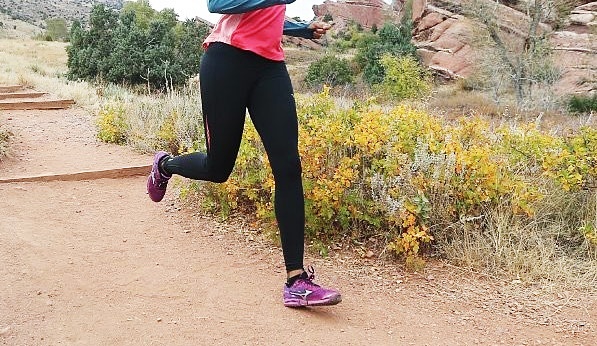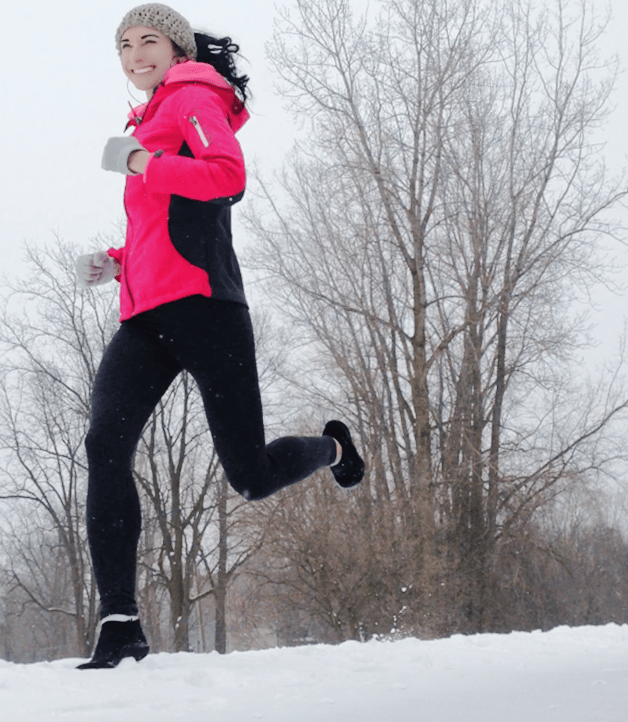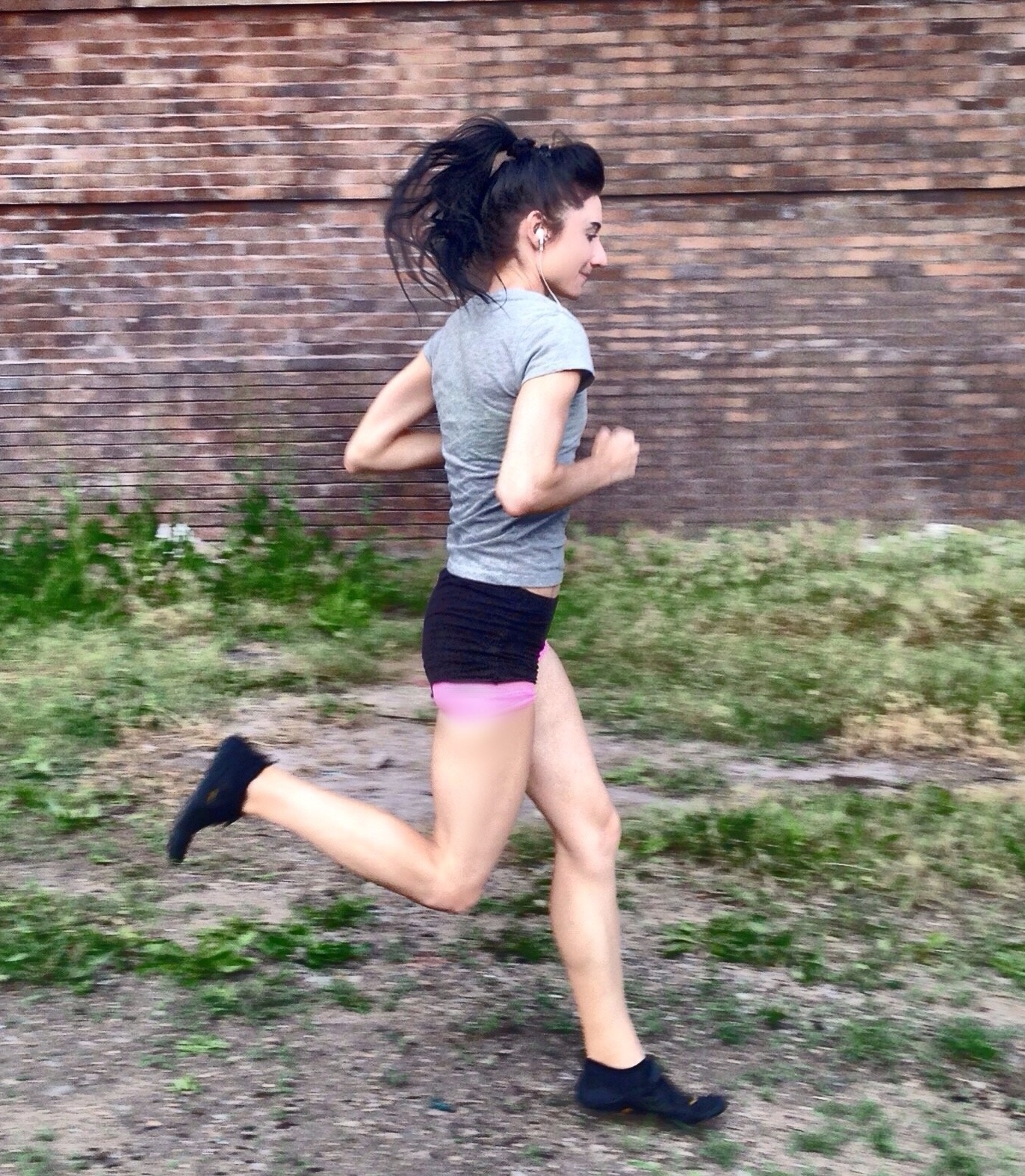The only reason your knees hurt when you heel strike when running is because you’re heel striking when running, rather than forefoot striking, which results in mechanical outputs that actually improve the functional strength of your knee, whereas heel striking is always accompanied by unusually high amounts of compressive loading on the knee as well as additional distinct stressors that wear-down the knee-joint as well. These are the important differences between forefoot and heel strike running.

Researchers have learned that runners who heel strike are at the greatest risk of knee ligament injury than forefoot runners.
The evidence shows that the magnitude of the mechanical forces in heel strike running has serious deleterious effects on the knee, resulting in pain and tissue degeneration because for one, the knee extends too much at heel strike, which raises tension at the knee-joint. For another, an impact-transient (i.e. burst in high impact) couple with a compressive force are also produced at heel strike, which are known catalysts for chronic knee ligament injuries.
At the same time, heel strike running increases angular work on the knee, resulting in greater competing compressive forces. But, can’t a heel strike runner wear a running shoe with more cushioning ?
A substantial body of evidence indicates that the thicker the underfoot cushioning, the harder the heel strike, the deeper, more frequent the shockwaves and compressive loads penetrate the lower leg, namely the knee! Hard to believe, isn’t it? Here’s all the factual reviews proving that more cushioning equals more impact generation when running.
Why Forefoot Running is BEST for Your Knees
In order to avoid knee problems as a runner, it is essential for our knees to function functionally, and they do in forefoot running by making more functional, practical uses of the knee-joint than heel strike running. Here’s how…
Landing on your forefoot when running was found to be most effective at encouraging the knee-joint to slightly flex and bend at landing. In this way, the foot lands closer to your center mass (i.e. your hips) thereby preventing an over-stride, too. This landing arrangement was associated with the most protection from impact and rotational stress on the knee, and it’s the only running style that actually eliminates the compressive force that directly causes runner’s knee.

Basically, the main effect of preventing over-striding has been implicated in eliminating the impacts responsible for runners knee in forefoot running. This is why forefoot running has gained almost universal acceptance because so far, the research explains very well that forefoot running is long-lasting and easy to maintain on the knees, since it prevents over-striding along with the accompanying impact transient and compressive force.
But, there’s more!
There’s another equally powerful way that forefoot running safeguards your knees and that is by naturally increasing step-rate, which is the number of times your feet step on the ground per minute when you run. The functional advantage of a higher step-rate when running is that it too encourages greater knee flexion at landing.

The Take Home Message
It makes the most intuitive sense to avoid heel striking when running because so far published studies have failed to show that it protects the knee, whereas in forefoot running, there’s an automatic removal of the impact spike, there’s less surface forces and there’s better stabilizing effects on the knee. Read more here about all the other injuries caused by heel strike running that are perfectly prevented in forefoot running!
If You’ve enjoyed my blog post, you’ll love my YouTube channel, here, where I talk and show in detail why forefoot running is the safest, most efficient way to run!
References:
Arendse et al., Reduced eccentric loading of the knee with pose running method. Med Sci Sports Exerc, 2004; 36(2):272-7.
Braunstein et al., Footwear affects the gearing of the ankle and knee joints during running. J Biomech, 2010; 43(11):2120-5.
Goss, DL and Gross, MT. A review of mechanics and injury trends among various running styles. US Army Med Dep J, 2012; 62-71.
Kerrigan et al., The effect of running shoes on lower extremity joint torques. PM R, 2009; 1(12):1058-63.
Bretta Riches
BSc Neurobiology; MSc Biomechanics candidate, ultra minimalist runner & founder of RunForefoot. I was a heel striker, always injured. I was inspired by the great Tirunesh Dibaba to try forefoot running. Now, I'm injury free. This is why I launched Run Forefoot, to advocate the health & performance benefits of forefoot running and to raise awareness on the dangers of heel striking, because the world needs to know.
Latest posts by Bretta Riches (see all)
- Can You Run In Barefoot Shoes? Yes, But DON’T Heel Strike! - 21/07/2024
- Why Cushioned Running Shoes Are Really Bad for Your Feet - 19/07/2024
- Do Cushioned Running Shoes Cause Injuries? - 17/07/2024

